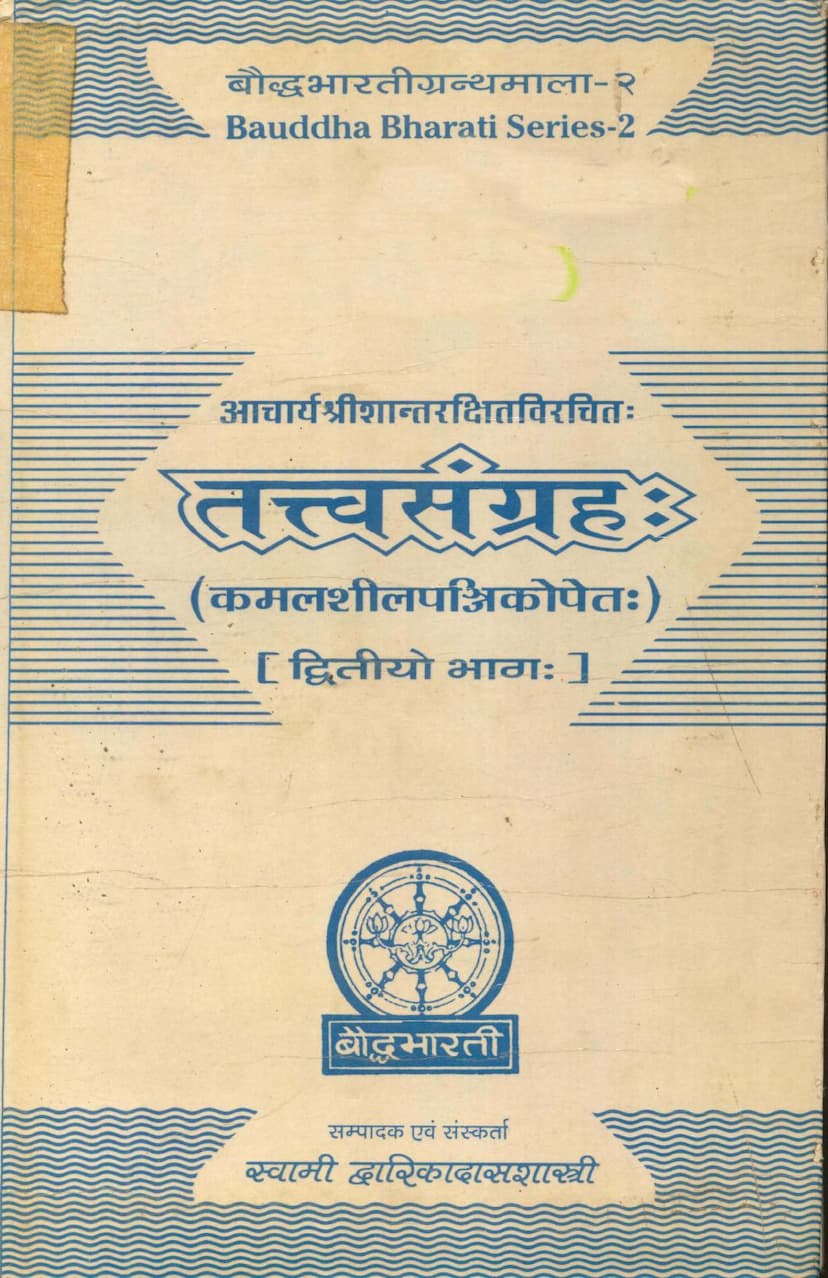Tattvasangraha Part 02
Added to library: September 2, 2025

Summary
The provided text is the second part of the Tattvasangraha, a significant philosophical work by the Buddhist scholar Ācārya Śāntarakṣita, with a commentary by Ācārya Śrī Kamalaśīla. The text was edited and compiled by Swami Dwārikādās Śāstrī and published by Bauddha Bharati in Varanasi, India, in 1997.
This volume, Volume II of the Tattvasangraha, covers several important philosophical examinations within Indian thought. The book highlights its unique feature of preserving views of scholars who might otherwise have remained obscure, with Kamalashila explicitly naming and quoting them. The text is positioned as a reflection of the vibrant philosophical discourse spanning three centuries, from Dharmakīrti to Uddyotakara, a period characterized by intense speculation and critical thinking. The works of Dignāga and Dharmakīrti are noted for having significantly challenged the foundational principles of orthodox Indian philosophies, raising questions about their very existence and making philosophical complacency impossible.
The table of contents reveals the detailed structure of the book, covering the following key topics:
-
20. Syādvādaparīkṣā (Examination of the Doctrine of Anekānta): This section delves into the concept of syādvāda, likely discussing its various aspects and refutations from different philosophical standpoints. The text seems to engage with the idea that reality possesses multiple facets or attributes.
-
21. Traikālyaparīkṣā (Examination of the Three Periods of Time): This chapter likely scrutinizes different theories concerning the nature of past, present, and future, possibly examining concepts like the existence of past and future entities or the reality of temporal flux.
-
22. Lokāyata parīkṣā (Examination of the Lokāyata/Cārvāka School): This section focuses on the materialistic philosophy of the Lokāyata or Cārvāka school, likely addressing their views on the self, the afterlife, and the nature of consciousness, particularly their materialistic interpretations.
-
23. Bahirarthaparīkṣā (Examination of External Objects): This is a substantial section likely discussing the existence and nature of external reality, a core debate in Indian philosophy, particularly between idealist (like Buddhist Vijñānavāda) and realist schools. It engages with theories about the nature of perception, the external world, and the relationship between consciousness and objects.
-
24. Śrutīparīkṣā (Examination of Testimony/Scripture): This chapter likely deals with the validity and authority of scriptural testimony, a crucial topic in the context of Vedic authority and its interpretation by different philosophical systems, including the critique of Vedic infallibility and discussions on the nature of sound and language.
-
25. Svataḥprāmāṇyaparīkṣā (Examination of Self-Validity): This section probably discusses the epistemological concept of svataḥprāmāṇya (self-validity) of knowledge, a key tenet of Mimāmsā, and its refutation or defense, along with related theories of validity and invalidity of knowledge.
-
26. Atīndriyārthadarśīparīkṣā (Examination of the Seer of Transcendent Realities): This final major section likely examines the concept of a person who has direct access to or knowledge of realities beyond ordinary perception, possibly discussing concepts like omniscience, divine perception, and the nature of spiritual attainment, potentially focusing on Buddhist claims about the Buddha's omniscience.
In essence, Volume II of the Tattvasangraha, as presented in this catalog link and description, is a comprehensive exploration of diverse and often conflicting philosophical and epistemological viewpoints within classical Indian thought, particularly as debated between Buddhist and Brahmanical traditions, with a focus on the critical analysis and refutation of non-Buddhist doctrines by Śāntarakṣita and Kamalaśīla.